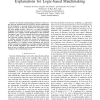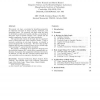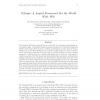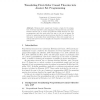232 search results - page 20 / 47 » Using an Expressive Description Logic: FaCT or Fiction |
AUSAI
2005
Springer
14 years 1 months ago
2005
Springer
In this paper, I will show how a controlled natural language can be used to describe knowledge for the Semantic Web and discuss the formal properties of this language. At the firs...
IAT
2009
IEEE
14 years 2 months ago
2009
IEEE
Abstract—In semantic matchmaking processes it is often useful, when the obtained match is not full, to provide explanations for the mismatch, to leverage further interaction and/...
CORR
2004
Springer
13 years 7 months ago
2004
Springer
We present role logic, a notation for describing properties of relational structures in shape analysis, databases, and knowledge bases. We construct role logic using the ideas of ...
CORR
2007
Springer
13 years 7 months ago
2007
Springer
The Semantic Web drives towards the use of the Web for interacting with logically interconnected data. Through knowledge models such as Resource Description Framework (RDF), the S...
JELIA
2010
Springer
13 years 6 months ago
2010
Springer
Abstract. Nonmonotonic causal logic became a basis for the semantics of several expressive action languages. Norman McCain and Paolo Ferraris showed how to embed propositional caus...




